Sulawesi: 20 June through 2 July 2012
I recently completed a 13 day trip to Sulawesi, visiting two parks, Tangkoko Batuangus Nature Reserve (8,718 hectares) and Lore Lindu National Park (218,000 hectares). Tangkoko is one of the most accessible spots for a good introduction to lowland Sulawesi fauna and photography; and Lore Lindu is one of the best for highland fauna.
For those traveling from Singapore, Silk Air as of this post flies four times a week to Manado departing Singapore about 9:30 am and arriving about 1 pm. The return flight departs at about 2 pm. Manado airport is modern enough to have sky bridges which beats walking across the tarmac. You can get a Visa on Arrival for USD $25 for passport holders from 52 countries including most countries from Europe, the Americas and Australia. For citizens of most Asean countries and a few others entry is visa free.
July and August are the driest months and the most popular, and it’s when most of the bird tours go, so accommodations and guides may get a bit tight if you haven’t booked in advance. I went slightly off season at the end of June and I had good weather and no issues with availability. June through September and maybe October the weather should be okay, with the most rain from November to May. This can vary from year to year and the north east monsoon from November onwards will carry the most rain. Annual rainfall of 2 meters or more can be expected, with more on the higher slopes and also influenced by the El Niño Southern Oscillation.
The village of Batu Putih is only about 60 km from the airport but the roads are not high speed and so it will be a 1.5 hours ride by taxi for equivalent of about US $30. English is widely spoken and tourists are very common because of the many dive spots near Manado. Batu Putih will likely be where you stay as it is right at the park entrance. There are five homestays, three directly across from the entrance, one a few minutes walk; and the last one you’d need transportation. The easiest solution would be to pick a tour company or guide and they can set everything up for you in advance, or you can go a la carte as well.
Route from airport to Batu Putih, the town nearest Tangkoko Nature Reserve
There was a beach resort called Benteng Resort with a small number of aircon rooms, but that is now defunct. The nearest town with a proper hotel is Bitung (population: 200,000) but you would need daily transportation to and from the park. Tour operators bring a lot of people on a day trip from Manado to see the tarsiers and macaques and don’t spend the night. So you could make day trips out of Manado or Bitung, but I would suggest roughing it and spending a few nights in Batu Putih.
I wound up staying at Tangkoko Ranger Homestay. Turns out they have two aircon rooms, so I took one.
Tangkoko Ranger Homestay, my home in Batu Putih for 5 nights. Includes all meal and laundry !
I spent four days visiting Tangkoko which turned out well for photography. Someone less interested in photography could do it in three days. All five endemic kingfishers are present in Tangkoko, but one (the Scaly-breasted) would require a strenuous six hour hike up the mountain, camping overnight and is best seen elsewhere. Both endemic hornbills are also present in the park. Several owls are possible. Some nice mammals are present. The park has the endangered Crested Black Macaque, the Spectral Tarsier, and the Sulawesi Bear Cuscus. And with around 50 avian endemics there is plenty to see. Often the Red-bellied Pitta (not endemic) and the Red-backed Thrush (endemic) will be showing, but not this year.
The town has a population of about 8,000 and 80% of the economy is fishing, with some copra and farming. Each of the five homestays only has 7 or 8 rooms, so the total overnight accommodation isn’t very high. Most of the rooms will be pretty basic and there are only two aircon rooms among all of the homestays. Prices for the homestays are modest and include breakfast, lunch and dinner. My homestay even did four days of laundry for no extra charge! There are about 2,000 tourists a year, but of these only about 300 come for birds. There are about 30 local guides to cater to the general tourist, but only 8 guides who specialize in birds. Of course some guides could come from Manado or other points.
The Tangkoko Ranger homestay restaurant. Just on the stream separating the village from the park.
Sulawesi is on the same time zone as Singapore, but much further east, which means you start to get predawn light by 5:30 am, when you’ll have your breakfast and get going by 6:00 am. On a typical day you’ll walk 4 to 5 km, with the first few kilometers level and not far from the beach and then gently rising on the slopes of the volcano. You are required to have a guide to enter the park which is probably best to keep tourists from getting lost as once you enter the forest it can look surprisingly similar in every direction you turn. The guides will all know the habitats very well and know where each species is most likely to be found.
The bridge to the park is just next to Tangkok Ranger restaurant
The local guides get going by 6 am but bring you back for lunch starting from around 11 am. Then there is a rest period while the heat of the day passes, and out again at 3 pm through the evening. If you have a heavy camera, they will carry your tripod, but not your camera. For that you would have to hire a porter. Porters are not expensive, so if you are a photographer you might wish to treat yourself and employ another local person.
Black volcanic sand beach in Batu Putih
Hired an outrigger to take us to the mangroves for the Great-billed Kingfisher
Sulawesi version of a floating kelong
Delelict boats in the mangrove
No matter where in the world you are coming from, you’ll be surprised by how different the natural surroundings are from your home base. The sand on the beach is black volcanic sand, some deposited from the last eruption in 1839. Although nominally a rainforest, the macro climate is much drier. Introduced teak grows well here. There is little undergrowth in the forest making it easy to walk off the track. There are lots of tracks and dry leaf litter everywhere. You will hear the Sulawesi Babbler calling at dawn everywhere. But as the day progresses, mostly you’ll hear a wide variety of pigeons and doves calling from the canopy. The main occupants of the understory are the three species of kingfishers, and they although generally common are widely spaced. They tend to sit motionless for long periods of time, ‘still hunting’ from quiet perches. With only one species of babbler, one species of bulbul, two species of woodpecker and no trogons or broadbills or barbets, the understory is very different from the lowland dipterocarp rainforest of peninsular Malaysia and the Greater Sundas. It’s the effect of the storied Wallace Line in practice.
Tarsier sleeping tree with onlooking tourists. You can just barely make out 2 tarsiers over the left shoulder of the man.
There is one thing to be prepared for in Tangkoko. There is a bug, perhaps a sand fly species, that can leave welts all over your body that take a couple of weeks to go away and can be rather itchy. So you are best to wear long pants, and bring 100% DEET insect repellant. It wouldn’t be paradise if there wasn’t some purgatory.
At the Hornbill Lookout point above Batu Putih. Guide Antry on the left.
Tangkoko is an excellent and easy introduction to Sulawesi nature, with four species of kingfishers almost guaranteed, a tarsier, an endangered macaque, a hornbill or two and perhaps some owls; you will not be disappointed. A highly recommended trip, and affordable too, as you do not need daily transportation, you can simply walk into the park. I got at least 25 endemic birds, plus several endemic mammals at this location. Here is a sampling of images from Tangkoko.
Here is my checklist for birds Seen, Heard or Photographed in Tangkoko
| Date | Endemic | Lifer | Species | S/H/P | Notes |
| 21-Jun-12 | E | L | Ashy Woodpecker | P | Tangkoko |
| 24-Jun-12 | E | L | Black Sunbird | S | Homestay |
| 21-Jun-12 | Black-naped Tern | S | Batu Putih mangrove | ||
| 23-Jun-12 | Brahminy Kite | P | Ridge 8 km from Batu Putih | ||
| 21-Jun-12 | Collared Kingfisher | S | Tangkoko | ||
| 21-Jun-12 | Common Dollarbird | S | Tangkoko | ||
| 23-Jun-12 | E | L | Golden mantled Racket-tailed Parrot | P | Ridge 8 km from Batu Putih |
| 21-Jun-12 | E | L | Great-billed Kingfisher | P | Batu Putih mangrove |
| 21-Jun-12 | Green Imperial Pigeon | P | Tangkoko | ||
| 21-Jun-12 | E | L | Green-backed Kingfisher | P | Tangkoko |
| 23-Jun-12 | E | L | Grey sided flowerpecker | S | Ridge 8 km from Batu Putih |
| 24-Jun-12 | E | L | Grey-cheeked Green Pigeon | S | Tangkoko |
| 24-Jun-12 | E | L | Grosbeak Starling | S | Tangkoko |
| 22-Jun-12 | Hair-crested Drongo | P | Tangkoko | ||
| 23-Jun-12 | Lesser Coucal | S | Ridge 8 km from Batu Putih | ||
| 21-Jun-12 | E | L | Lilac Cheeked Kingfisher | P | Tangkoko |
| 21-Jun-12 | E | L | Ochre-bellied Hawk Owl | P | Tangkoko |
| 23-Jun-12 | Olive winged Sunbird | P | Ridge 8 km from Batu Putih | ||
| 24-Jun-12 | E | L | Ornate Lorikeet | P | Tangkoko |
| 21-Jun-12 | L | Philippine Scrubfowl | S | Tangkoko | |
| 21-Jun-12 | Pink necked Green Pigeon | S | Tangkoko | ||
| 21-Jun-12 | E | L | Purple winged Roller | S | Tangkoko |
| 21-Jun-12 | E | L | Red-knobbed Hornbill | P | Tangkoko |
| 21-Jun-12 | Ruddy Kingfisher | P | Tangkoko | ||
| 21-Jun-12 | Sacred Kingfisher | S | Tangkoko | ||
| 2-Jul-12 | E | L | Scaly-breasted Kingfisher | P | Mt. Mahawu |
| 23-Jun-12 | E | L | Silver-tipped Pigeon | P | Ridge 8 km from Batu Putih |
| 21-Jun-12 | L | Slender-billed Crow | S | Tangkoko | |
| 23-Jun-12 | Sooty-headed Bulbul | P | Ridge 8 km from Batu Putih | ||
| 21-Jun-12 | E | L | Sulawesi Babbler | P | Tangkoko |
| 23-Jun-12 | E | L | Sulawesi Black Pigeon | P | Ridge 8 km from Batu Putih |
| 22-Jun-12 | E | L | Sulawesi Dwarf Kingfisher | P | Tangkoko |
| 23-Jun-12 | E | L | Sulawesi Scops Owl | P | Homestay |
| 23-Jun-12 | E | L | Sulawesi Serpent Eagle | P | Ridge 8 km from Batu Putih |
| 2-Jul-12 | E | L | Sulawesi Taractic Hornbill | S | Bitung lookout |
| 23-Jun-12 | E | L | White-necked Myna | P | Ridge 8 km from Batu Putih |
| 21-Jun-12 | E | L | White-rumped Cuckoo shrike | S | Tangkoko |
| 21-Jun-12 | E | L | Yellow-billed Malkoha | P | Tangkoko |
| 24-Jun-12 | E | L | Yellow-sided flowerpecker | P | Homestay |
| Totals | 25 | 27 | 39 |
Lore Lindu June 25 to July 1, 2012
My next sector of the trip was to Lore Lindu which is in the highlands of central Sulawesi. You could drive there and some bird tours do, but the travel time is over 24 hours. So flying is the best choice, but the flights aren’t very convenient involving long layovers in Makassar to catch the next flight. You must fly from Manado to Makassar and then to Palu. Several airlines fly these routes, but Lion Air has the most frequent schedules and the best prices. Even with flying, it took me 15 hours from my homestay in Tangkoko to reach my new homestay in Wuasa. A long day!
Fly from Manado to Makassar and then to Palu
You land in Palu which has an interesting climate, it is surrounded by mountains and is in a rain shadow, so it’s hot, dry and semi arid. The trip to Wuasa is about 100 km but will take 3.5 hours. You begin a long gradual climb out of Palu and into Lore Lindu National Park. But due to transmigration, the lowland forests have been cleared along the road by settlers for gardens and crops. Eventually you reach the mountain pass at 1,700 meters which is where the Anaso track starts. You descent into Napu valley at about 1,000 meters to the largest village of Wuasa.
Map of route from Palu to Wuasa
Descending from the moutain pass into Napu valley to Wuasa village
The village of Wuasa has the closest accommodations to the Anaso track. There are a five homestays, but only Sendy’s Homestay has a restaurant. Municipal electricity is on only from past 5 pm to around 11 pm. Here in Wuasa the standard is the price of the homestay only includes lodging, meals are extra.
Sendy Homestay in Wuasa
I had five full days to explore Lore Lindu. Every day, up at 5 am, a quick bite and on the road by 5:15 am, and reach the mountain pass by 6 am. In the mountain pass the roads are in very bad condition, so the journey takes much longer than it should. Every manner of vehicle is trying to negotiate the road, as Napu valley supplies many vegetable crops to the rest of Sulawesi. You will see a lot of over laden trucks with cabbages, and plenty of cabbages laying by the roadside that have fallen off!
Map of Anaso track and Lake Tambing
The first day we just did Lake Tambing, which is near the start of the Anaso track. The bird life is quite good, as the birds seem to enjoy the lakeside habitat. Interestingly you will hear and see some old friends from the peninsular Malaysia highlands: Little Pied Flycatcher, Mountain Tailorbird, Snowy-browed Flycatcher. Fascinating that these little fellows have made it across the Wallace Line.
Park headquarters at Lake Tambing on a misty morning
When the sun comes out, at Lake Tambing
Lore Lindu is much wetter than Tangkoko, it’s a real rain forest environment, with up to 4,000 mm of annual rainfall. Best time of year to visit is also July and August extending into September. While I was there, most afternoons rained heavily and lasted through the evening into the night. At Lake Tambing my guide got a couple of leech bites, but on the Anaso track, it seems there were none – too high and too cold. And it is chilly and often very misty in the morning, you will need a light weight jacket.
On a typical rainy afternoon
The next four days we explored the Anaso track. It’s a good hike! Starting at 1,700 meters, it reaches a summit of 2,317 meters at about 5.6 kilometers in from the road. Anaso track was a logging road 30 years ago before Lore Lindu became a national park. The grade was built for heavy vehicles so it is nowhere too steep but it is a steady climb. Normally this is a three hour hike to the summit, but depending upon how many birds you stop to see it may take longer. In places it has been heavily eroded.
Starting pont of Anaso track at 1,700 meters elevation. Guide Idris on the right.
The first major feature you reach is an area known as The Bridge. There was a wooden bridge that until 2009 cars could still cross. That all ended with a big landslide. If you are conscious of heights it will trigger your fears. Still it is remarkable that motorbikes can navigate the route all the way to the summit.
The Bridge
The people native to the region still use the forest extensively. One of the principle uses is collecting Damar gum from native trees for use in foods, varnish and incenses. Coming from the Malay word for resin.
All along the way, look out for Purple-bearded Bee-eaters. Although the English names suggests a close relationship with the Red-bearded Bee-eater of the Sundic lowland forest, they are in a separate genus, and behave rather differently. Rather than glide they flap their wings noisily, so you can hear them when they fly!
There are several camping spots along the way, with the first being at Helipad 1, which was a helicopter pad during the logging operations.
Campsite at Helipad 1
The higher mountain endemics are generally located from the helipads and higher. Were I to do the trip again, I might consider camping at Helipad 1. It would save a lot of hiking in the morning and get you at altitude while the morning was still young.
Helipad 1 and Helipad 2 are among the best spots to look for the Satanic Nightjar, normally on the ground.
When you reach the Geomalia area marked on the map, be on the lookout for the large thrush like bird that spends most of its time on the ground and rarely flies. The guides can hear them walking, glad we got the chance to see one, but no photo. Look early in the morning.
We found one Satanic Nightjar perched high on a ginger flower
So finally reaching the summit we took the obligatory photos and broke open our lunch. Cell phone reception was pretty good at the summit and we could see some of the villages in Napu Valley, the same valley where Wuasa is located. Fortunately we had a warm sunny day, the summit could be rather miserable on a dark rainy day.
One of the guides looking at a village in the distant Napu valley
The flora changes to a mossy forest near the summit, here are some lichens and mosses.
On the morning of my flight back to Manado, we have three hours we could spare to bird around Napu valley, and we did pick up a lot of lower elevation species. There are twelve villages in Napu Valley, all quite small villages. Wuasa is the largest at 2,800 population. Several villages don’t have cell phone coverage. Municipal electricity is only on in the evenings.
Small village in Napu valley
We also get a brief introduction to the many megaliths in Napu valley. In the nearby Bada valley some of the megaliths are quite large and a tourist attraction all by themselves.
Here is a small megalith with a satellite dish in the background. ET phone home?
The villages in Napu valley grow corn, rice, cabbages, tapioca, tomatoes and famously cacao. Indonesia is the world’s third largest producer of cacao. On a sunny afternoon rice and cacao would be put out to dry, cacao smells very pungent, but nothing like chocolate.
Cocoa beans drying
Overall Lore Lindu is more expensive than a comparable stay at Tangkoko. You need to hire a car every day, while in Tangkoko no transport is needed. Still this is the best introduction to highland Sulawesi flora and fauna, but expect daily expenses to be about double what you paid in Tangkoko.
Returning to Manado after a long day of flight sectors from Palu to Makassar, I had one night in the Novotel at the end of my trip. I had previously arranged with my Tangkoko guide to meet me there and go to Mt. Mahawu and try for the Scaly-breasted Kingfisher. There is a well known stake out at about 1,100 meters that you must reach before dawn, and you must have the call. The good news is you can drive up and park your car. It was the only bird in the entire trip for which we used any playback. We succeeded in seeing this shy bird, this one is not guaranteed! And a great way to end a fascinating trip.
Crops on Gunung Mawahu at 1,100 meters
Gunung Lokon, venting on the right. Last erupted in February 2012.
Here is a selection of endemic birds from Lore Lindu
Here is my checklist for birds Seen, Heard or Photographed in Lore Lindu
| Date | Endemic | Lifer | Species | S/H/P | Notes |
| 30-Jun-12 | E | L | Ashy Woodpecker | P | Lake Tambing |
| 1-Jul-12 | Barred Buttonquail | S | Napu Valley | ||
| 1-Jul-12 | E | L | Barred Rail | P | Napu Valley |
| 1-Jul-12 | Black Eagle | S | on the road to Palu | ||
| 26-Jun-12 | L | Black-fronted White-eye | P | Lake Tambing | |
| 1-Jul-12 | Black-naped Oriole | S | Napu Valley | ||
| 26-Jun-12 | E | L | Blue-fronted Flycatcher | P | Lake Tambing |
| 1-Jul-12 | Blue-tailed Bee-eater | S | Napu Valley | ||
| 1-Jul-12 | Brahminy Kite | P | Napu Valley | ||
| 26-Jun-12 | E | L | Caerulean Cuckoo shrike | P | Lake Tambing |
| 1-Jul-12 | Cattle Egret | S | Napu Valley | ||
| 1-Jul-12 | Chestnut Munia | S | Napu Valley | ||
| 30-Jun-12 | E | L | Chestnut-backed Bush Warbler | S | Lake Tambing |
| 26-Jun-12 | Citrine Flycatcher | P | Lake Tambing | ||
| 26-Jun-12 | Collared Kingfisher | P | Lake Tambing | ||
| 26-Jun-12 | E | L | Dark Honeyeater | P | Lake Tambing |
| 1-Jul-12 | Drongo Cuckoo | H | Napu Valley | ||
| 1-Jul-12 | Eurasian Tree Sparrow | S | Napu Valley | ||
| 28-Jun-12 | E | L | Fiery-browed Starling | P | Anaso track |
| 28-Jun-12 | E | L | Geomalia | S | Anaso track |
| 1-Jul-12 | Glossy Ibis | S | Napu Valley | ||
| 26-Jun-12 | Golden-bellied Gerygone | S | Lake Tambing | ||
| 1-Jul-12 | Golden-headed Cisticola | P | Napu Valley | ||
| 30-Jun-12 | Great eared Nightjar | S | while owling in Napu valley | ||
| 28-Jun-12 | E | L | Greater Sulawesi Honeyeater | S | Anaso track |
| 1-Jul-12 | E | L | Grosbeak Starling | S | Napu Valley |
| 26-Jun-12 | E | L | Island Verditer Flycatcher | P | Lake Tambing |
| 1-Jul-12 | L | Lemon bellied White-eye | S | Napu Valley | |
| 1-Jul-12 | Lesser Coucal | S | Napu Valley | ||
| 26-Jun-12 | Little Pied Flycatcher | P | Lake Tambing | ||
| 26-Jun-12 | E | L | Malea | S | Lake Tambing |
| 27-Jun-12 | E | L | Malia | S | Anaso track |
| 26-Jun-12 | Mountain Tailorbird | S | Lake Tambing | ||
| 26-Jun-12 | L | Mountain White-eye | P | Lake Tambing | |
| 1-Jul-12 | Pacific Swallow | S | Napu Valley | ||
| 1-Jul-12 | Pied Chat | S | Napu Valley | ||
| 26-Jun-12 | E | L | Piping Crow | P | Lake Tambing |
| 1-Jul-12 | Plaintive Cuckoo | H | Napu Valley | ||
| 27-Jun-12 | E | L | Purple bearded Bee-eater | P | Anaso track |
| 1-Jul-12 | Purple Heron | P | Napu Valley | ||
| 28-Jun-12 | E | L | Pygmy Cuckoo shrike | S | Anaso track |
| 27-Jun-12 | E | L | Red eared Fruit Dove | P | Anaso track |
| 27-Jun-12 | E | L | Satanic Nightjar | P | Anaso track |
| 26-Jun-12 | E | L | Scarlet Honeyeater (Crimson Mezyomela) | S | Lake Tambing |
| 1-Jul-12 | L | Slender-billed Crow | S | Napu Valley | |
| 26-Jun-12 | E | L | Small Sparrowhawk | S | Lake Tambing |
| 30-Jun-12 | Snowy-browed Flycatcher | P | Anaso track | ||
| 1-Jul-12 | Sooty-headed Bulbul | P | Napu Valley | ||
| 1-Jul-12 | Spotted Dove | S | Napu Valley | ||
| 1-Jul-12 | Spotted Kestrel | P | Napu Valley | ||
| 26-Jun-12 | E | L | Sulawesi Babbler | P | Lake Tambing |
| 27-Jun-12 | E | L | Sulawesi Ground Dove | P | Anaso track |
| 26-Jun-12 | E | L | Sulawesi Hawk Eagle | P | Lake Tambing |
| 26-Jun-12 | E | L | Sulawesi Leaf Warbler | P | Lake Tambing |
| 26-Jun-12 | E | L | Sulawesi Pygmy woodpecker | P | Lake Tambing |
| 30-Jun-12 | E | L | Sulawesi Thrush | P | Anaso track |
| 1-Jul-12 | L | Sunda Teal | P | Napu Valley | |
| 30-Jun-12 | E | L | Superb Fruit Dove | S | Lake Tambing |
| 27-Jun-12 | E | L | White-bellied Imperial Pigeon | S | Anaso track |
| 1-Jul-12 | White-breasted Munia | S | Napu Valley | ||
| 28-Jun-12 | white-breasted Wood Swallow | S | Anaso track | ||
| 1-Jul-12 | L | white-shouldered Triller | S | Napu Valley | |
| 26-Jun-12 | E | L | Yellow & Geen Lorikeet | S | Lake Tambing |
| 27-Jun-12 | E | L | Yellow flanked Whistler | S | Anaso track |
| 26-Jun-12 | E | L | Yellow sided Flowerpecker | P | Lake Tambing |
| 26-Jun-12 | E | L | Yellow vented Whistler | P | Lake Tambing |
| 1-Jul-12 | E | L | Yellow-billed Malkoha | P | Napu Valley |
| Totals | 33 | 39 | 67 |
More Images
A complete collection of images from the trip can be found here
http://www.pbase.com/con_foley/sulawesi
http://www.pbase.com/con_foley/sulawesi_nature
Contact information
Don’t be surprised if the phone doesn’t answer on the first ring, or the email isn’t answered promptly. Cell phone coverage is spotty, and no one has Internet at home. This is not meant to be comprehensive, just what I found during my travels.
Homestays in Tangkoko
Mama Roos
- mamaroos@ymail.com
- +62 813 4042 1454
- +62 899 1681 151
Tangkoko Ranger
- Pak Yunos, owner
- +62 821 9503 5495
- tangkokorangerhomestay@yahoo.com
Tarsius Homestay
- sorry no contact info
Tangkoko Lodge
- Bobby Lambaihang
- +62 813 4002 6980
- macaca_nigra@yahoo.com
Tangkoko Dove
- sorry no contact info
Guides in Tangkoko
Antry Kakauhe
- turacuena_manadensis@yahoo.com
- +62 852 9861 4762
Homestays in Wuasa
Sendy Homestay
- +62 813 4106 5109
- +62 852 4120 7372
- no email
Mona Lisa Homestay
- sorry no contact info
Guides in Wuasa
Idris Tinulele
- +62 813 4137 4260
- geomalia@yahoo.com

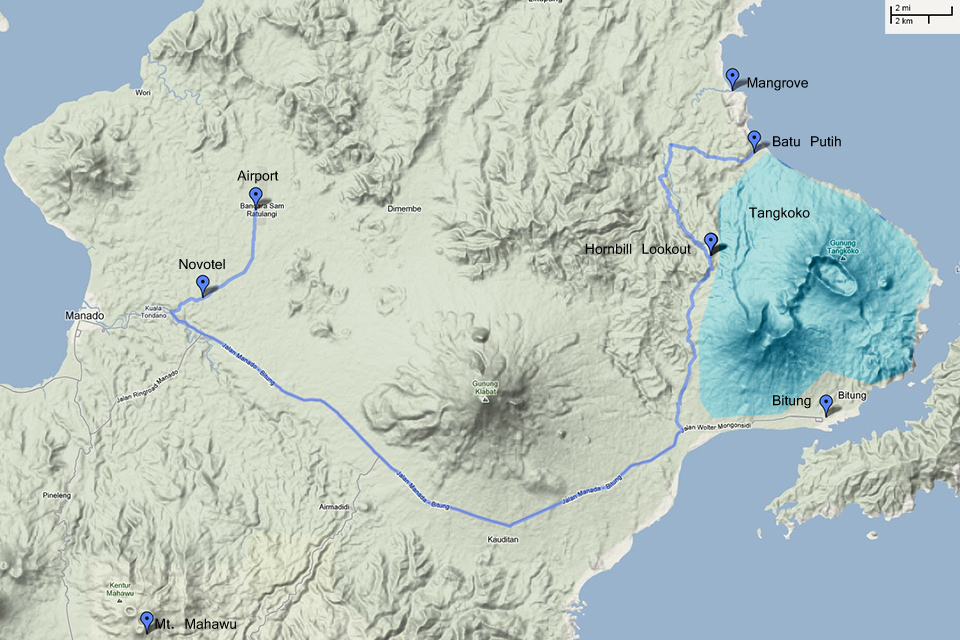





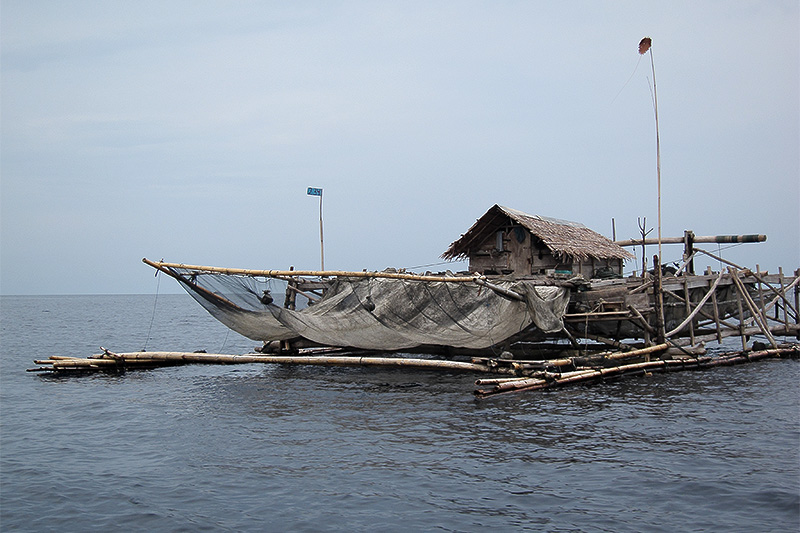


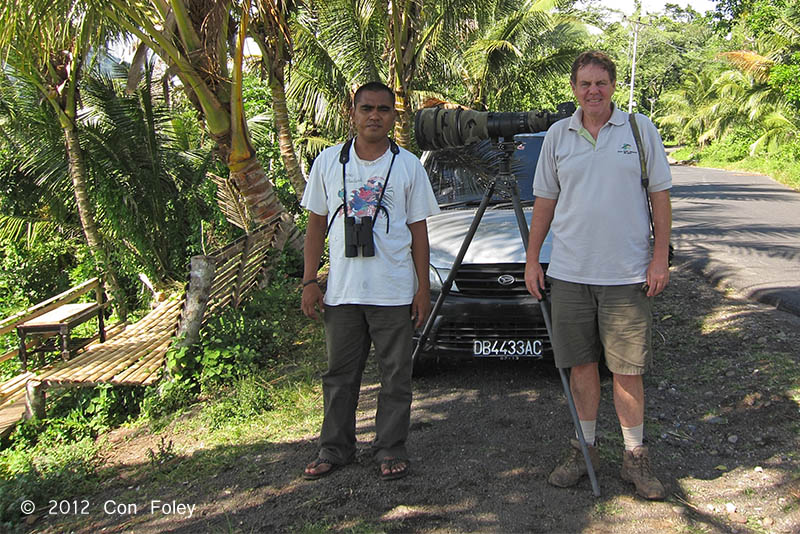












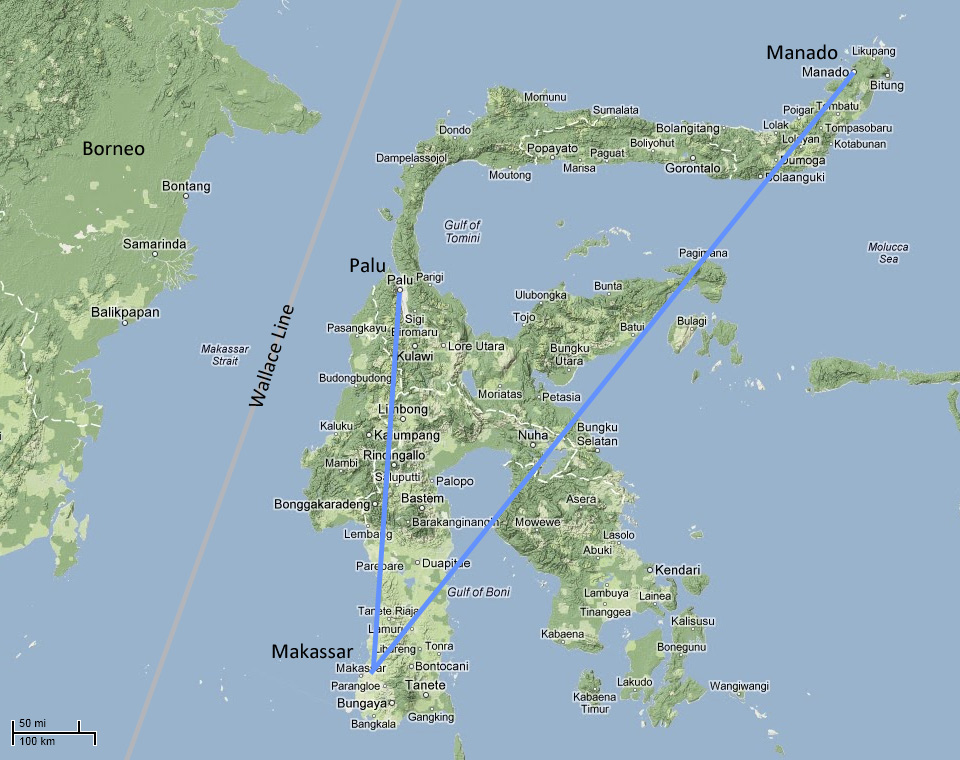
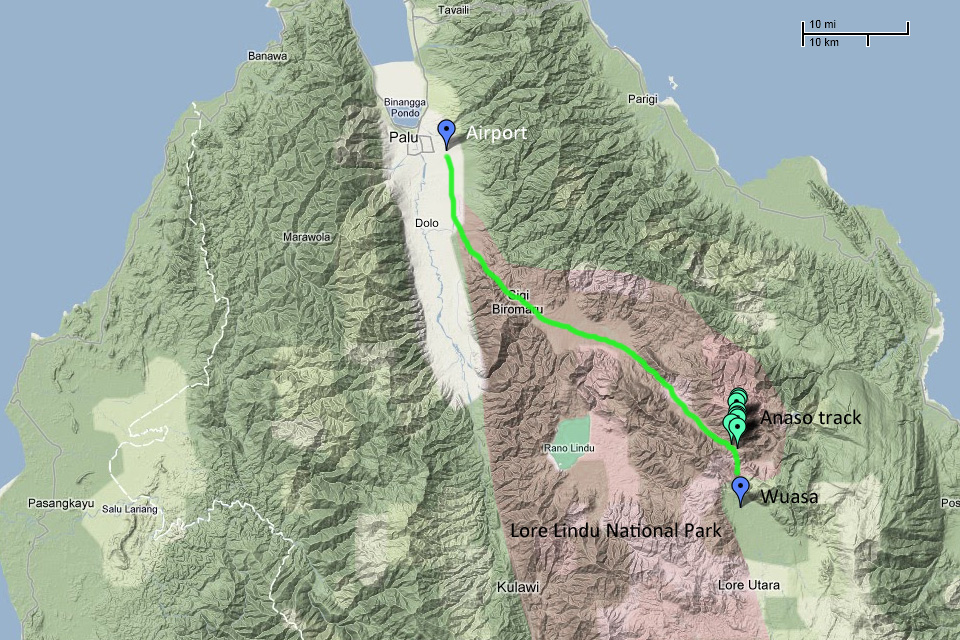
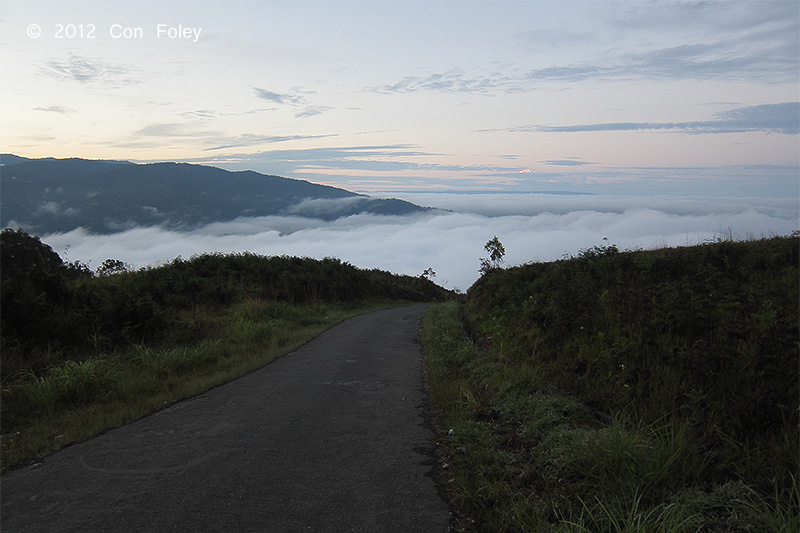

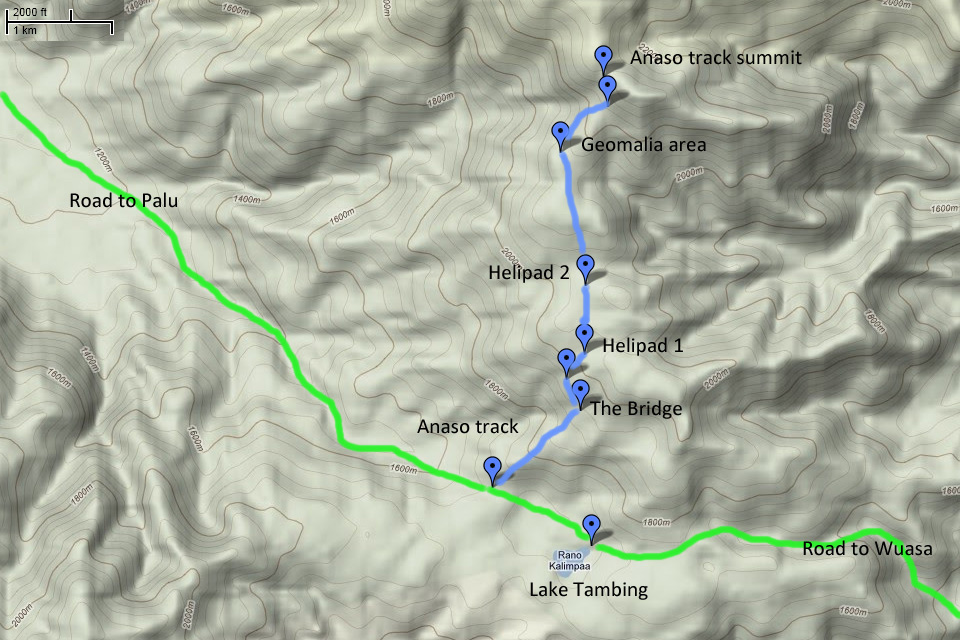
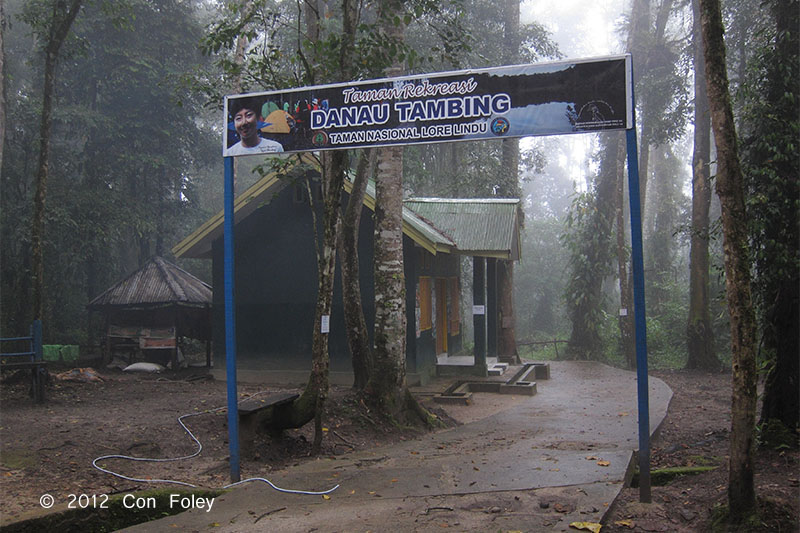



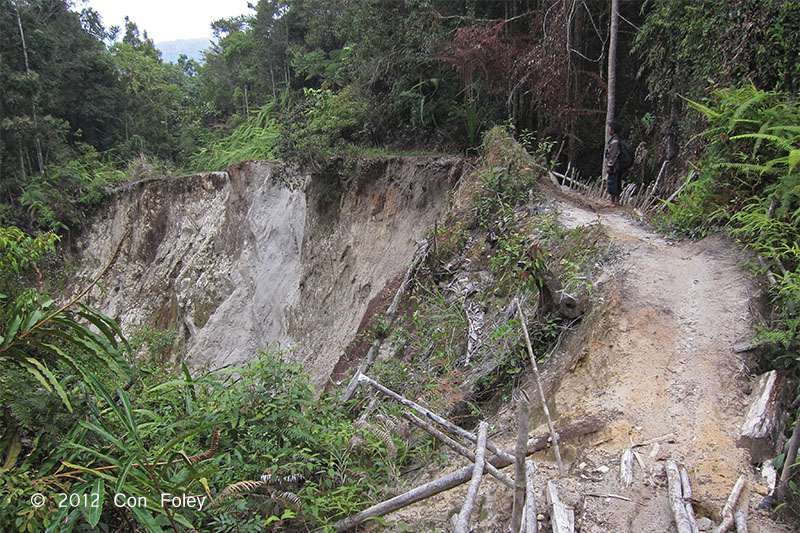

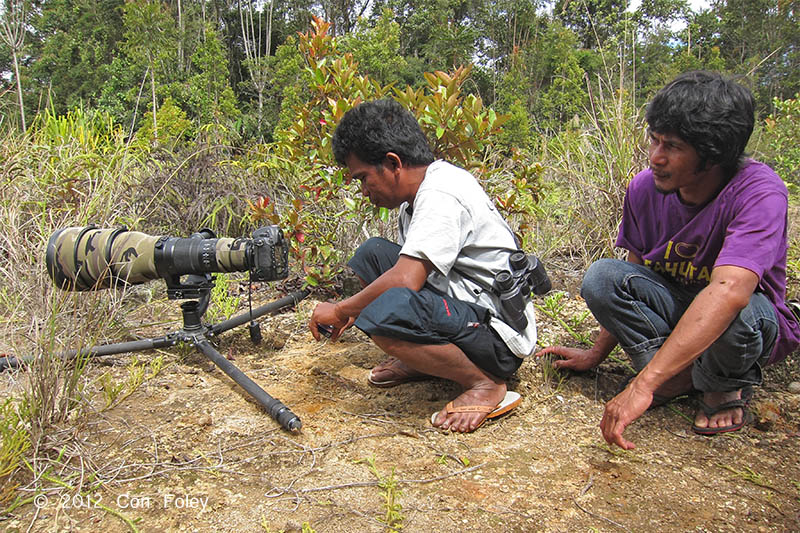
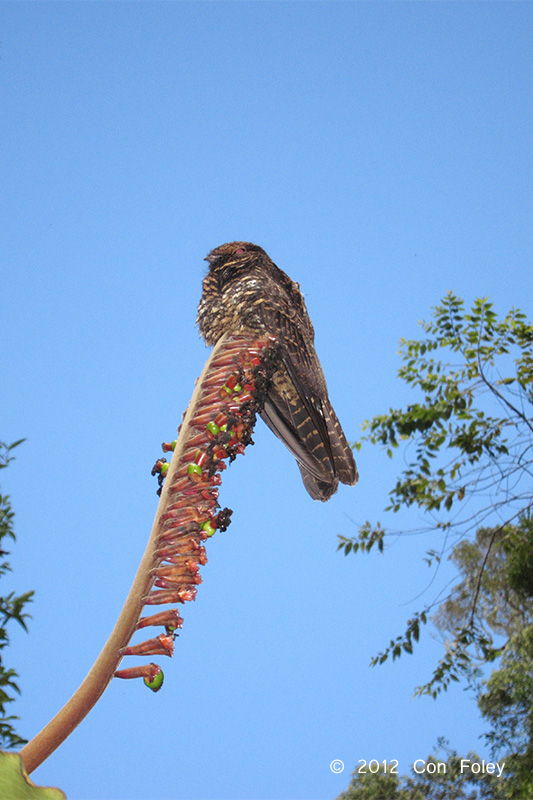
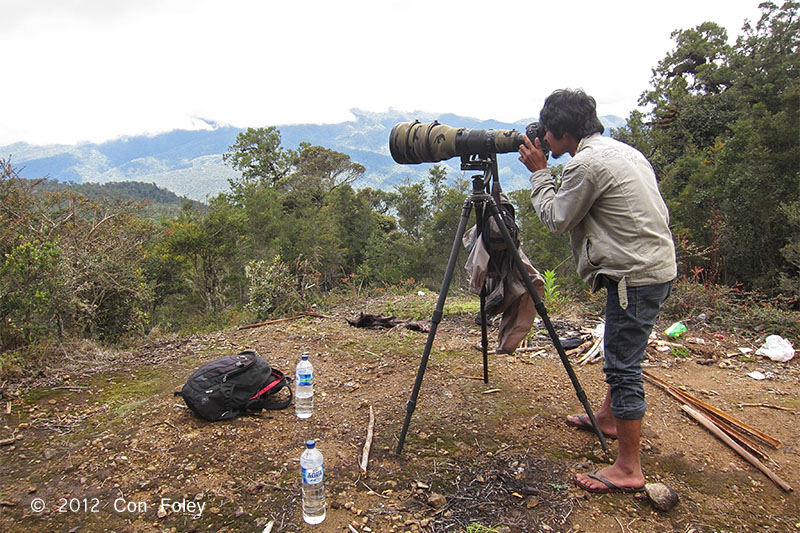
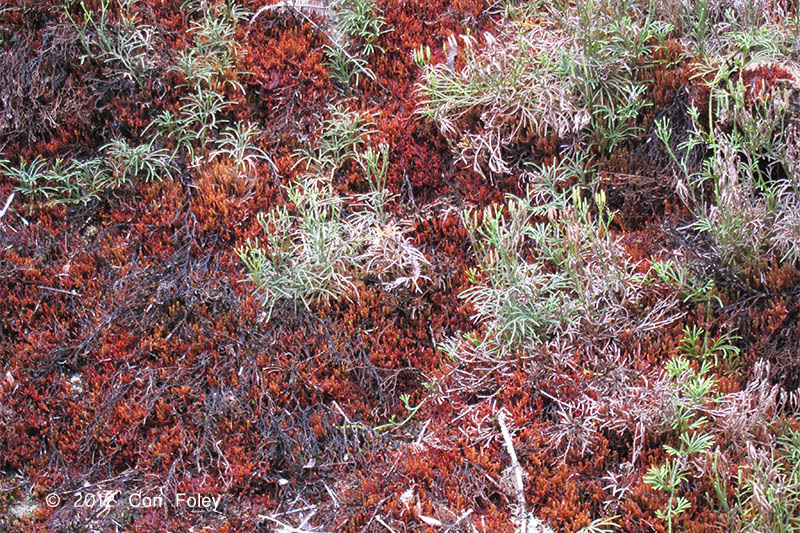
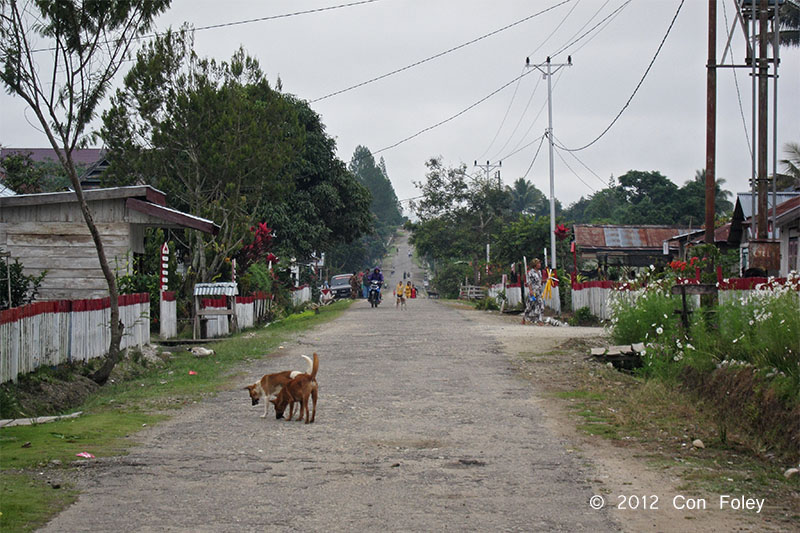
















Thanks for sharing this very good write up. Very informative.
Thanks for sharing. Wonderful and very informative. Love the pic.
Great pics and info. BTW the last picture is Gunung Lokon (not Klabat).
Hi Anthony, Thanks for the correction!
Con,
Thanks for the comprehensive write-up !
I went to Tangkoko in 1993 (stayed at the Ranger homestay) and I’ve been thinking of going again, so this is very useful.
John Holmes (Hong Kong)
Hi,
Looks like U had a nice trip there. No wonder lots of birder want to go Sulawesi.
Cheers
Hi Con,
This is a very comprehensive birding trip report. Must have used tons of SD cards for the trip 🙂
Hi Con,
Beautiful pictures and a very informative site. I’m planning a trip to some National Parks in North-Sulawesi and you’re site is very inspiring. I was wandering what program you use for the maps.
Thanks a lot,
Cas
Hi Cas,
I am just using Google Maps and then drawing on the map with Photoshop.
Cheers, Con
Hi Con
I really enjoyed reading your report – and pictures of the satanic nightjar and purple bearded bee eater. I went to Lore Lindu in 2011 and was lucky enough to have Idris as a guide. I wondered, do you have idris’ contact as I have lost touch – and am thinking of a trip to Halmahera this year – and I know Idris does Halmahera too.
Thanks
Clare
Scroll to the bottom of my post. Idris contact info is given. Cheers
Hi Con,
silver-tipped pigeon is right, not silver-tRipped, OK? 🙂